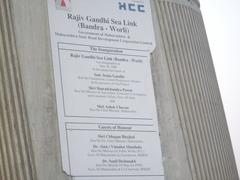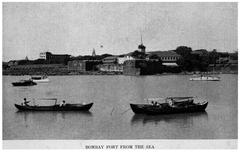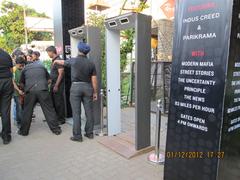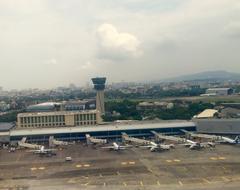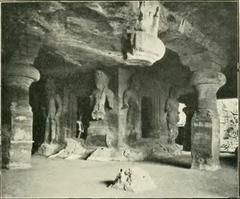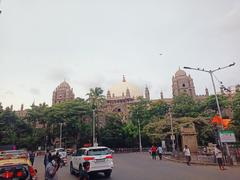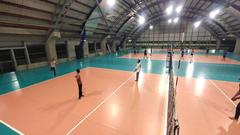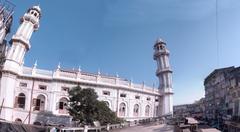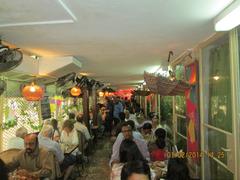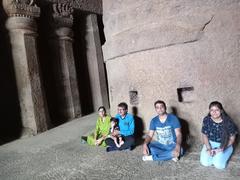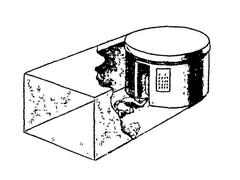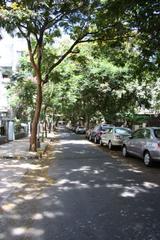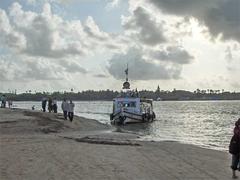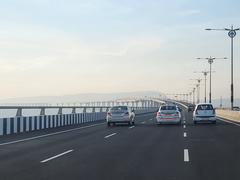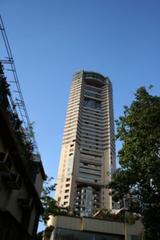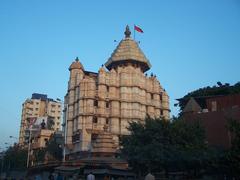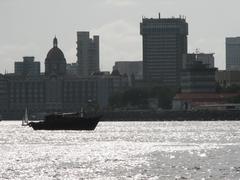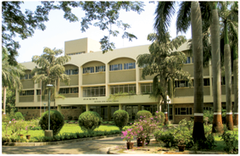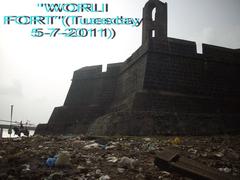
Hanging Gardens of Mumbai: Visiting Hours, Tickets, and Tourist Guide
Date: 04/07/2025
Introduction
The Hanging Gardens of Mumbai, also known as Pherozeshah Mehta Gardens, are a celebrated oasis atop Malabar Hill, offering a verdant escape from the city’s bustle. Established in 1881 above the Malabar Hill reservoir, these terraced gardens combine British-era landscape architecture with Indian horticultural artistry. The gardens not only protect Mumbai’s vital water infrastructure but also provide panoramic views of the Arabian Sea, Marine Drive, and the city skyline, making them a favorite destination for both locals and tourists (Wikipedia, MakeMyTrip).
Beyond their scenic beauty, the Hanging Gardens serve as a vital green lung for Mumbai, hosting manicured lawns, vibrant floral displays, and whimsical animal-shaped topiary hedges. The gardens are also a hub for community activities, including yoga sessions, tai chi groups, and occasional cultural performances, reflecting the city’s dynamic spirit (Lodhi Garden, Tourist Secrets).
Table of Contents
- Introduction
- Historical Development
- Architectural and Environmental Significance
- Cultural and Social Importance
- Visitor Information: Hours, Tickets, and Tips
- Getting There and Accessibility
- On-Site Facilities and Amenities
- Visitor Experience
- Safety and Guidelines
- Dining and Accommodation
- Conservation Challenges
- Major Reconstruction Project
- Practical Information During Reconstruction
- Visual Gallery
- FAQs
- Conclusion and Final Tips
- References
Historical Development
Originally designed by municipal engineer Ulhas Ghatkopar, the Hanging Gardens were constructed over the city’s main water reservoir. Named after Sir Pherozeshah Mehta, a distinguished civic leader, the gardens reflect a harmonious blend of British and Indian landscape traditions. Their primary purpose was to safeguard the reservoir from contamination while providing a public green space (Wikipedia, MakeMyTrip).
Architectural and Environmental Significance
Positioned about 50 meters above sea level, the Hanging Gardens use Malabar Hill’s natural slopes to create terraced lawns and walkways. The gardens rest on a reinforced concrete roof, ingeniously balancing the weight of soil, plantings, and visitors above the reservoir. This design not only preserves the city’s water supply but also delivers spectacular sea and city views (Lodhi Garden, Tourist Secrets).
Cultural and Social Importance
Green Oasis in a Bustling City
Mumbai’s fast-paced environment finds a counterpoint in the serene atmosphere of the Hanging Gardens. Morning walkers, families, and tourists flock here for tranquility, fresh air, and relaxation.
Iconic Symbols and Community Life
The gardens’ animal-shaped topiaries—elephants, peacocks, rabbits—and the famous Boot House are perennial favorites, especially among children. The site also hosts yoga, tai chi, and periodic cultural performances, reinforcing its role as a hub for community engagement (Tourist Secrets).
Visitor Information: Hours, Tickets, and Tips
- Opening Hours: Daily from 5:00 AM to 9:00 PM (E India Tourism, Boundless Explorism).
- Entry Fee: Free. There is a nominal charge for photography (Rs. 50) and videography (Rs. 100) (E India Tourism).
- Best Time to Visit: November to February for cooler temperatures and peak floral displays.
- Pro Tip: Arrive early or visit late afternoon for pleasant weather and the best panoramic views.
Getting There and Accessibility
- Location: Ridge Rd, Simla Nagar, Malabar Hill, Mumbai, Maharashtra 400006, India (Safarway).
- By Road: Accessible via taxis, auto-rickshaws, and private vehicles from Peddar Road and Ridge Road.
- By Train: Charni Road station (Western Line) is about 2.5 km away, with onward taxis or autos (E India Tourism).
- By Air: Chhatrapati Shivaji Maharaj International Airport, 20 km away, with direct taxi access (E India Tourism).
- Accessibility: Wheelchair-friendly paths and ramps are provided, though some steep areas may pose challenges (Agoda).
On-Site Facilities and Amenities
- Seating: Numerous benches and shaded areas for relaxation (Agoda).
- Children’s Play Area: Features animal-shaped topiaries and open lawns (Agoda).
- Restrooms: Clean public facilities near the entrance (Tripoto).
- Drinking Water: Available at select points; carry your own bottle during hot weather (GuideTour).
- Accessibility: Wheelchair-accessible paths and ramps throughout (Agoda).
Visitor Experience
- Ambience: Manicured lawns, colorful flower beds, animal-shaped hedges, and panoramic sunset views (Tripoto).
- Activities: Walking, jogging, photography, picnics, yoga, and meditation. Community events and occasional art/yoga sessions are hosted here (Safarway).
- Seasonal Highlights: Gardens are especially lush during monsoon (June–September), but paths may be slippery. Prime floral displays occur in winter.
- Crowds: Weekdays are quieter; weekends and festivals see more visitors (Agoda).
Safety and Guidelines
- Belongings: Stay alert, particularly during crowded times.
- Footwear: Wear comfortable shoes for varied terrain.
- Hydration and Sun: Bring water, hats, and sunscreen.
- Cleanliness: Use bins and leave no litter.
- Photography: Respect the nominal fee and other visitors’ privacy.
Dining and Accommodation
No dining establishments are within the gardens, but Malabar Hill and Marine Drive offer a variety of restaurants and cafes nearby. Numerous hotels and guesthouses cater to all budgets in the vicinity (Tripoto).
Conservation Challenges
Urbanization and Environmental Stress
The gardens are under threat from urban encroachment, pollution, and increasing footfall, putting pressure on its biodiversity and mature tree cover (Earth5R, DesiTours).
Maintenance and Water Scarcity
The BMC manages the gardens, but maintenance is challenged by budget constraints, pollution, littering, and water management issues—especially given Mumbai’s hot summers and unpredictable monsoons (TravelTriangle).
Major Reconstruction Project: Malabar Hill Reservoir
A 2017 audit revealed that the Malabar Hill reservoir beneath the gardens required urgent reconstruction to ensure water supply safety (Outlook Traveller, IndiaTimes). The Brihanmumbai Municipal Corporation (BMC) has embarked on a seven-year, INR 698 crore project involving phased demolition and rebuilding of both the reservoir and the gardens. This requires felling some trees and transplanting others, raising concerns about biodiversity loss and heritage impacts (Citizen Matters, Mumbai Live, Open Magazine).
Practical Information During Reconstruction
- Current Status: Access may be restricted or closed; always verify with official sources (Mumbai Tourism).
- Nearby Alternatives: Kamala Nehru Park and the Walkeshwar area remain open for visitors.
- Guided Tours: Many tour operators include these areas in their itineraries, offering valuable cultural context.
Visual Gallery
- Panoramic view of Hanging Gardens overlooking the Arabian Sea at sunset
Alt text: Panoramic view of Hanging Gardens of Mumbai with Arabian Sea at sunset - Close-up of the floral clock with visitors
Alt text: Floral clock at Hanging Gardens Mumbai - Children playing near animal-shaped hedges
Alt text: Children playing at Hanging Gardens Mumbai
Frequently Asked Questions (FAQ)
Q1: What are the Hanging Gardens of Mumbai visiting hours?
A: Typically open daily from 5:00 AM to 9:00 PM, but check for updates during reconstruction.
Q2: Is there an entry fee?
A: Entry is free. Photography and videography incur nominal charges.
Q3: Are the gardens wheelchair accessible?
A: Yes, there are ramps and accessible paths.
Q4: What is the best time to visit?
A: November–February for pleasant weather and full bloom.
Q5: Are nearby attractions worth visiting?
A: Absolutely. Kamala Nehru Park, Marine Drive, Chowpatty Beach, and Walkeshwar Temple are all nearby.
Q6: Are pets allowed?
A: Generally, pets are not permitted.
Q7: What’s the status of the reconstruction project?
A: As of July 2025, the gardens are closed or partially accessible. Restoration is expected to last several years.
Conclusion and Final Tips
The Hanging Gardens of Mumbai are a testament to the city’s innovative blend of utility, beauty, and cultural vibrancy. Despite ongoing conservation challenges and a major reconstruction phase, they remain a symbol of Mumbai’s enduring spirit and commitment to preserving green spaces (MakeMyTrip, Lodhi Garden). For the best experience, plan your visit during the cooler months, explore nearby attractions, and stay updated on access status.
For more travel tips and updates on Mumbai’s historical and cultural sites, download the Audiala app and follow us on social media.
References
- Wikipedia: Hanging Gardens of Mumbai
- MakeMyTrip: Hanging Gardens of Mumbai
- Lodhi Garden: Hanging Gardens of Mumbai
- Tourist Secrets: The Untold Story of Mumbai’s Hanging Gardens
- E India Tourism: Hanging Gardens Mumbai
- Safarway: Hanging Gardens of Mumbai
- Citizen Matters: Mumbai Hanging Gardens Closure and Conservation
- Mumbai Live: Mumbai Iconic Hanging Garden to be Shut for 7 Years
- Tripoto: Hanging Gardens Mumbai Travel Guide
- GuideTour: Hanging Gardens Mumbai
- Agoda: Discover Mumbai’s Hidden Oasis
- Earth5R: Mumbai India Circular Economy
- DesiTours: Discover the Hidden Oasis
- TravelTriangle: Hanging Gardens
- Outlook Traveller: Mumbai’s Hanging Gardens to Shut
- IndiaTimes: Mumbai’s Hanging Gardens to Shut for 7 Years
- Open Magazine: Hanging in the Balance
- Mumbai Tourism: Hanging Garden Mumbai








